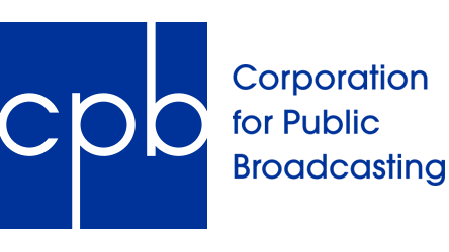DirecTV’s 100 HD Channel Promise
EL SEGUNDO, CALIF.
DirecTV says it will leapfrog its competition this fall with the launch of “the best and largest selection of HD channels that customers ever imagined.”
The enthusiastic comments from CEO Chase Carey follow the July 6 launch of the DirecTV 10 satellite, described by the company as “the first leg of (its) mission to dramatically expand HD.”
According to Carey, DirecTV already had agreements in place for about 90 HD channels. He said 70 would be launched “around the end of the third quarter.” And by year-end, DirecTV would “get to the hundred channels” promised last year. Linear channels, that is.
“There’s a magic to having a unique volume, which is why I think the 100 has been important to us,” said Carey. “It really resonates that you’ve got an incredibly rich HD experience.” A second satellite is expected to support about HD 150 linear channels by mid-2008.
Upping the ante, Carey said DirecTV would also offer HD VOD.
DirecTV’s HD DVRs (HR20, HR21, HR21+) will be software-activated in October, said Chief Technical Officer Romulo Pontual, giving subscribers a broadband (pull) as well as satellite (push) connection. And a deal with TiVo would make remote booking possible by year end. Those who have hooked up their box to a home network will also be able to stream online video to their TV sets later this year.
But the main difference between DirecTV’s product and others, said Pontual, is “the very tight integration between the traditional navigation guide and the VOD offering.”
PART OF THE EQUATION
“High-definition television will become the next key battleground in the video war,” Lehman Brothers said in Industry Overview of cable and satellite providers released in March. Ironically, they concluded that “both cable and DBS (direct broadcast satellite) are likely to invest in HD to remain competitive,” but, “in the end, neither side is likely to obtain a sustainable competitive advantage from HD.”
Near-term, these analysts gave DBS the HDTV edge due to DirecTV’s launch and EchoStar’s 15 VOOM HD networks.
One of the report’s authors, Managing Director Vijay Jayant, told TV Technology the report’s conclusions still held true at press time. But he, like DirecTV’s CEO, said that HDTV was only part of the equation defining DirecTV’s near term edge—the integrated box was equally critical.
“It would allow DirecTV to offer a more effective VOD-like solution, which would blunt cable’s key video product advantage [on-demand content] as well as bind DirecTV more tightly to the RBOC [Regional Bell Operating Company] partner providing the data service and facilitating the on-demand portion of the offering,” said Jayant. “Combined with a wider HD offering, DirecTV would then, arguably, have the best TV offer in the marketplace.”
At press time Lehman Brothers disclosed that it had done business with DirecTV in the past 12 months, receiving non-investment banking related compensation. It also disclosed that it did business with companies covered in its Industry Overview of cable and satellite providers.
The report concluded that near-term, “Cable, using its current infrastructure, will have difficulty matching DBS’ HD offerings without further investment, particularly in areas with 750 MHz systems, which we estimate have capacity for approximately 20 HD channels in total.”
SWITCHED DIGITAL VIDEO
But the analysts believed cable is capable of closing the current capacity gap within 18 months at a “manageable cost” through the deployment of switched digital video technology. Under this scenario, a server located at the hub only sends channels actually requested by customers to the particular node or group of nodes that service them, thereby conserving bandwidth. Cablevision already completed an SDV installation to support its expanded HD offering, and Jayant expected that “Time Warner will be more than half done by year-end.”
In late August, Cox Communications announced that it had begun deploying an SDV solution from BigBand Networks in the cable operator’s northern Virginia market, and had plans to use BigBand’s solution to “significantly” expand its HDTV lineup in markets across the country. Cox Communications spokesman David Grabert said that Cox will also roll out the SDV solution in its largest cable operation in the Phoenix/Tucson market, as well as in Orange County, Calif., before year-end. But, as far as Grabert is concerned, the advantages of doing this go beyond HDTV.
“HDTV is definitely a principle driver,” he said. “But there are lots of advanced services—including on-demand, iTV, and faster high-speed Internet—[driving us] to get more out of our bandwidth.”
Both Comcast and Time Warner took the HDTV challenge enough to sue DirecTV over commercials that claimed the satellite provider delivered superior HDTV. Cable won.
At press time, Comcast had a comparable 20 to 25 linear channels and, more important, 180 HD on-demand choices, said spokesperson Jenni Moyer.
“By ’08 we’ll have more than 800 HD viewing choices—a combination of linear channels and several hundred on-demand choices,” said Moyer. She indicated that Comcast plans to conduct SDV trials later this year in a few markets; the specific timing and markets have yet to be announced.
Parker McConachie, spokesman for EchoStar, DirecTV’s main satellite competitor, said that EchoStar is “currently the leader in HD” with 38 national channels, plus local channels where available. He said the company’s HD DVR, the ViP722, can record 55 hours of HDTV (350 hours of standard definition), and has 750 GB to store recorded programs.
His details on future plans were limited to marketing ploys. Outside the company, the buzz focused on EchoStar’s negotiations with DirecTV for continued collaboration.
Get the TV Tech Newsletter
The professional video industry's #1 source for news, trends and product and tech information. Sign up below.
